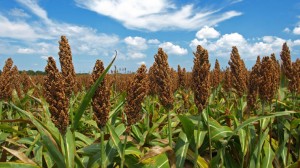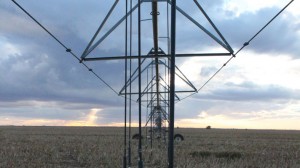Looking across the South Plains during a certain time of year yields a sight of snow white cotton from as far as the eye can see. The little cloud puffs are what West Texas is famous for. But, soon the area may be known for another crop.
According to Chuck West, Ph.D., a professor in the department of plant and soil science and a top researcher for the Texas Alliance for Water Conservation, sorghum is the crop of West Texas’ future.
West said sorghum is a forage crop. He said sorghum is used as food for animals, particularly cattle. The price of beef is high right now, with large cows being sold for almost $300 a head. With a price like that, sorghum is becoming more important to area farmers and ranchers.
“This offers an option for producers in the area to switch from some of their high water consuming crops to lower water consuming pasture, forage crop that can then be grazed or fed to the animals,” West said, “and end up making some good profit.”
With no end to the drought happening any time soon, West said low-water crops like sorghum are becoming more reliable than other options. He said sorghum does not need to be irrigated as often or as much to be fruitful. Sorghum only needs 20 to 22 inches of irrigation to be successful, while most cotton species need anywhere from 16 to 40 inches in dry climates.
West said other forage crops, such as old world bluestem grass, are being produced in higher quantities in the dry Texas area. West said many farmers are planting different crops throughout their land in order to produce the most profit.
“People are now diversifying there, instead of putting an entire pivot of cotton; they may do half a circle of cotton irrigated, the other half, maybe, dry land cotton or dry land sorghum,” West said. “Next time you’re up in an airplane looking down on a circle, you’ll notice that more and more of them are not uniform full circles. They’ve got different textures and different pieces of the pie.”
Ken Rainwater, Ph.D., former director of the Texas Tech University Water Resources Center and professor in the department of civil and environmental engineering, agreed sorghum is a profitable crop in West Texas. He said farmers who switch to low-water crops like sorghum now rather than later are doing more for the current water stability issue.
“People are already making those conversions, making crop choices, and you’ll see that continue to happen,” Rainwater said. “Each farmer is making annual choices typically based on the farm bills and the risks they manage, insurance payments and all those things about which crops to raise and when to plant them and how to get an acceptable amount of yield.”
Tech professor and agriculture economist Darren Hudson, Ph.D., also agreed dry land crops are the best choice in today’s West Texas climate. He said farming techniques that will alleviate the need for more irrigation are better choices economically.
“A lot of farmers maybe switch to grain sorghum instead of growing corn. They’ll grow grain sorghum, which requires less water. Things like that. Limited tillage systems where they don’t turn the soil over as much. It increases the chemical use but decreases the water requirement. There’s a number of strategies out there.”
West said researchers are focusing on sorghum and other dry land crops to learn more about how they can help West Texas farmers.


